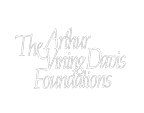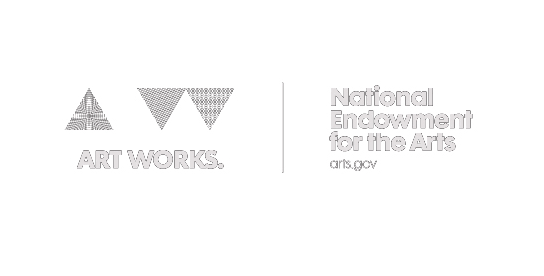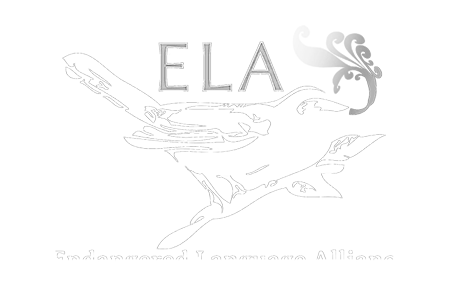Linguistics 101
Nick Evans, featured in Language Matters, is a linguist at the Australian National University. But what does a linguist actually do? Watch how Nick works with language consultants Johnny Namayiwa and Charlie Mangulda and you get a sense of what linguistic research in the field is actually like. It is patient, long-term work, hi-tech but also very human – and it depends fundamentally on collaboration with native speakers and their communities.
Most schools teach languages, but far fewer cover linguistics. Everyone is a fluent native speaker of at least one language, and over 75% of the world’s population is bilingual, with nearly half functioning routinely in three or more languages, according to one estimate. From an early age, children start using thousands of words and deploying complex structures, all without formal instruction – some linguists say that humans have a “language instinct” hard-wired deep in our brains.
Even a brief introduction to the ideas of linguistics can transform ideas about how we speak and listen to each other every day. The philosopher Ludwig Wittgenstein wrote that the limits of a person’s language are the limits of his or her world.
Linguistics is the scientific study of human languages in all their diversity and complexity, including both spoken and sign languages. Between 6,000 and 7,000 languages exist across the world, not to mention all the different dialects and varieties within them, based on where people live and what groups they belong to, their social class, age, gender, race, or religion. There are even different idiolects: every single person speaks a little bit differently because of their background and personal development.
Linguists are not just experts on particular languages like English, Chinese, or Mawng – they probe the universal tendencies and patterns that occur across all of human language. Linguists research the deep structure of languages, the ways they are used every day, and how they change over time. Language is universal – every group on earth has one – and in many ways is unique to humans.
Even the shortest conversation depends on a mind-boggling combination of factors, from the physical properties of the sound waves (or high-speed gestures) we produce to our intentions in a particular social context. Every language is both a formal, rule-based system, and a social phenomenon that functions as an almost unconscious part of everyday life, like breathing. Languages are constantly in motion, changing over time and space, differing between individuals and contexts. Linguists consider oral speech to be much more fundamental than writing, since most of the world’s languages have been unwritten until very recently. In a few cases, there is evidence of writing going back 5,000 years, but some form of spoken language seems to be at least 100,000 years old, if not older.
As linguists Geoff Nunberg and Tom Wasow write:
[Language] is lodged in human brains; it is passed on from one generation to the next; it is intimately bound up with the forms of human thought. Unlike a specialized system like arithmetic, it serves a vast range of communicative needs—from getting your neighbor to keep the weeds down, to reporting simple facts, telling jokes, making declarations of love, or praying to a deity. And of course it functions in the midst of complex societies, not just as a means of communication, but as a marker of social identity—a sign of membership in a social class, ethnic group, or nation. It isn’t surprising, then, that linguistic research shares some concerns with just about every one of the human sciences, from psychology and neurology to literary study, anthropology, sociology, and political science.
Linguists study every level of linguistic structure, from sounds to words to full utterances and beyond. Linguistics is usually divided into several key fields, all of which interact with one another, though each has its own tools, approaches, and theories:
Phonetics is the study of speech sounds, the meaningful sounds we make while speaking. That includes both consonants, sounds where breath is obstructed somewhere in the vocal tract, and vowels, where the vocal cords vibrate but there is no obstruction. Every language has an inventory of meaningful sounds, called phonemes, that are produced by specific combinations of the ways we use our vocal cords, tongues, teeth, lips etc. For instance, in English bit and pit are two different words, with different meanings. Both b and p are bilabial “stop” consonants, produced with both the lower and upper lip, but b is “voiced” and p is not. That’s why b “buzzes”: touch your vocal cords when you’re making the sound!
Read more about the sounds of speech.
Phonology is the study of how the sounds described by phonetics operate and are organized in language. Sounds encode meaning and combine in complex ways. As linguist Kenneth Pike put it, “phonetics gathers the raw material,” while phonology “cooks it.” Take the way that nouns are made plural in English. The final sound in any noun’s singular form changes the way that the plural –s is pronounced. Try pronouncing “cats,” “dogs,” and “churches” one after the other, and you’ll find that “plural –s” can sound three different ways, which linguists would write (in IPA) as /s/, /z/, and /əz/. All of us instinctively know what linguists call the phonotactic rules of the languages we speak – for instance, the kinds of sounds and syllables that are allowed in English. Which is why ran is an acceptable syllable in English, but tlan is not – though tlan works perfectly well and is a common word in Nahuatl, an indigenous language of Mexico.
Learn about phonetics and phonology in this free online lecture from the Virtual Linguistics Campus.
Morphology is the study of words and how they are formed. Words are often made up of smaller bits of meaning, called morphemes: “cats” includes both “cat” and plural “-s.” “Mistrustful” has three morphemes: “mis-trust-ful.” Some languages can form entire sentences by linking up morphemes within a single word – in Central Siberian Yupik, angyaghllangyugtuqlu means “Also, he wants to acquire a big boat.”
Learn more about morphology and how words are formed.
Semantics is the study of meaning in language. Signs (words, phrases etc.) are connected in various ways to what they signify, their meaning – which can carry a great deal of nuance depending on connotation and context. Different languages make very different distinctions in their vocabulary – Hawaiian has many different words to describe winds, as Puakea Nogelmeier points out in Language Matters. The Hawaiian word pa can mean “wall,” “yard,” “dish,” “wind touching skin,” and many other things, says Nogelmeier – it is these intricate webs of meaning that can give a language its poetic character.
Syntax is the study of how words are combined into phrases and sentences. Every language has its own grammar, a set of rules and principles that govern how phrases and sentences are formed. There is substantial variation between languages, but there are also certain universal tendencies, which teach us important lessons about the human mind. Take word order: many languages, like English and Chinese, specify that the subject of a sentence should generally come first, followed by the verb and then the object, as in Jane eats cake. Although many other combinations are possible, very few languages routinely put the object first. What comes first has salience, and people everywhere usually perceive the subject of a sentence – typically the key actor and prime mover – as being more salient than the object.
Linguists have proposed many different theories of how syntax works, but all of them attempt to explain the basic functions we rely on language to fill: asking questions, negating, showing possession, specifying the tense of verbs, and so on.
Read the introduction to syntax on the University of Sheffield’s All About Linguistics site.
Watch the syntax-related videos on the Grammar Made Clear YouTube channel.
Phonetics and phonology, morphology, semantics, and syntax: these are the major branches of linguistics, but there are other approaches too. Historical linguistics examines how languages change over time. Language acquisition focuses on how children learn their first language, and second-language acquisition looks at how people learn languages as they get older. Psycholinguistics is concerned with how we process and produce language, why even fluent speakers make “mistakes,” and the suite of biological and cognitive factors that are involved in speech. Sociolinguistics analyzes language in society, including the role that gender, age, class, race, and other factors play in the different ways that people speak. Language documentation, often focused on endangered languages, is research that tries to “catch” and record how a little-described language is actually used.
Multilingualism

Ruth Singer asks people to draw “language portraits,” using different colors to represent what their languages mean to them.
Language Matters opens on Goulburn Island, off the coast of northern Australia – an extraordinary place where a community of just 400 people maintains 10 unique languages. Without formal instruction, people on Goulburn regularly speak or can understand five or six languages. For her research on multilingualism, linguist Ruth Singer asks people to draw “language portraits,” using different colors to represent what their languages mean to them. “People here naturally learn a lot of languages,” says linguist Nick Evans of Goulburn, “and if you have this sort of diversity it enshrines a certain type of respect for others.”
Goulburn is unusually diverse, but multilingualism is common the world over – in fact, it is the global and historical norm. By and large without much difficulty, people have lived in multicultural environments and spoken multiple languages for thousands of years. Linguist David Crystal estimates that over 75% of the world’s population is bilingual, with nearly half functioning routinely in three or more languages. As Gwyneth Lewis, one-time National Poet of Wales, puts it in Language Matters: “It’s a myth of the dominant, usually Anglophone cultures that the normal state is to be monoglot. Actually, far, far more people are multilingual – not just bilingual.”
There was a time when researchers believed that learning multiple languages from birth led to “interference” in language learning, but the science now shows that that is clearly not the case. Most experts agree that bilingualism and multilingualism are not only natural and normal, but carry significant cognitive benefits. Being multilingual appears to make people smarter, improve cognitive skills unrelated to language, and help older people fend off dementia.
Nowhere is the prevalence and normalcy of multilingualism more apparent than in the world’s language hotspots, areas where linguistic diversity is highly concentrated. Though linguistic diversity exists on every continent and in virtually every country, it is not evenly distributed. Language hotspots are also typically characterized by ethnic diversity, complex geography, ecological abundance, and a long history of tolerance and cultural pluralism.
Papua New Guinea is famous for having over 800 languages, although Tok Pisin, an English-based creole, has become a lingua franca spoken across the country. India, Indonesia, and Nigeria are among the countries with the largest number of living languages. Before the arrival of European settlers, some 300 distinct Native American languages were spoken in what is today the U.S. and Canada – many of them as different from one other as English is from Chinese.
Linguists David Harrison and Greg Anderson of the Living Tongues Institute for Endangered Languages have identified key regions around the world where a high degree of linguistic diversity is now severely threatened: Siberia, Pacific Northwest, Central South America (the Amazon), and Northern Australia, including Goulburn Island. Due to their isolation, speech communities living on islands (e.g. Goulburn, Hawai‘i) or in mountainous areas (e.g. Wales) are in general more likely to preserve their languages over time. 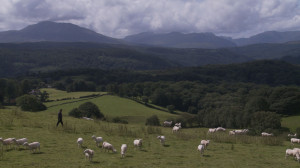 Valleys and plains more easily become “spread zones” for dominant languages. On the other hand, global cities like New York and London have also become language hotspots due to immigration. The Endangered Language Alliance, which documents endangered languages in New York, estimates that there may be up to 800 different languages spoken just in NYC’s metropolitan area!
Valleys and plains more easily become “spread zones” for dominant languages. On the other hand, global cities like New York and London have also become language hotspots due to immigration. The Endangered Language Alliance, which documents endangered languages in New York, estimates that there may be up to 800 different languages spoken just in NYC’s metropolitan area!
Read more about multilingualism and the different types of multilingual speakers.
Check out these tips on how to raise a child with more than one language.
Did You Know…?
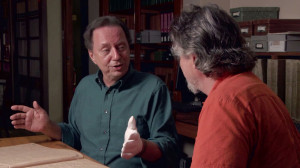 Just over a century ago, according to linguist Puakea Nogelmeier in Language Matters, Hawaiian speakers were “among the most literate people on Earth.”
Just over a century ago, according to linguist Puakea Nogelmeier in Language Matters, Hawaiian speakers were “among the most literate people on Earth.”
How did they do it? Part of the answer is that every language has a certain number of phonemes (meaningful sounds) that are used to make meaning. Hawaiian is often analyzed as having just 13, the lowest number of any language, which makes reading and writing more intuitive. On the other hand, some of the highly endangered Khoisan languages of southern Africa have up to 140 phonemes, many of them click consonants. (One recent theory holds that languages have fewer phonemes the further they are from the original area of human language development in Africa.)
The language database Ethnologue lists 137 languages that have fewer than 10 speakers, and those are just the situations where we have adequate data – there may be nearly three times that number. Dozens of languages are down to just a single last speaker, like Charlie Mangulda, the last speaker of Amurdak, featured in Language Matters.
Groups of historically related languages, descended from a common “ancestral” language, are called language families. However different they seem today, English, Spanish, Russian, Farsi, and Hindi are all part of the same Indo-European language family, along with hundreds of other languages. Welsh is part of Indo-European too, but belongs to a Celtic “branch” with its own distinctive history. With over 1,200 languages spread from Madagascar to Easter Island, Austronesian, which includes Hawaiian, is one of the largest of all language families. Language isolates – Basque is a famous example – have no known “ancestral” connection to any other language.
So far 95% of the world’s languages have little online presence – partly because half of all languages have no writing system. The situation is slowly beginning to change. According to one recent estimate, you can now searchGoogle in 150 languages, use Firefox in 105 languages, navigate Facebook in approximately 100 languages, and find tweets in 139. You can use Windows in Hawaiian, read blogs in Welsh, download a Cherokee app, text in Tlingit. Check out the recent online Native Language Challenge!
Grammar and culture are connected. One example is what linguists call evidentiality. About a quarter of the world’s languages—mostly in the western U.S., the Amazon, the Caucasus, and the Himalayas—have systems that require speakers to make clear what evidence they have for their statement, whether it’s hearsay, conjecture, inference, direct experience, or something else. In English this only happens haphazardly, with tone of voice or when people say “maybe,” “probably,” “I think that,” and so on – languages with evidential systems have this as a fundamental part of their grammar, and it becomes something that speakers have to keep track of.
Learn a Language!
Kau‘i Sai-Dudoit’s Hawaiian family picnic in Language Matters is a perfect example of how language lives and develops best in natural settings. Unless you are a toddler hearing it all around you, learning a language is never easy. In fact, most studies have found that the most effective language learning we do happens before we turn 7 years old! Part of that is because of the way our brains develop, but part of it also has to do with the immersive environment of a home where family members and caregivers are transmitting language.
Language immersion programs and immersion schools, like Nāwahī in Hawai‘i, do their best to mimic what goes inside a home.
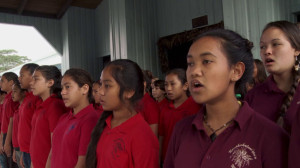 And when in-person or classroom language immersion is not possible, there are now a host of free online tools for language learning – including for less commonly used languages like Welsh and Hawaiian.
And when in-person or classroom language immersion is not possible, there are now a host of free online tools for language learning – including for less commonly used languages like Welsh and Hawaiian.
For larger languages like Chinese or Spanish, two of the best new free sites are Duolingo, which emphasizes interactive skill-building, and Yabla, which helps you learn with online video content. Memrise, available in dozens of languages (including several Native American languages) helps with the heavy lifting of memorizing vocabulary, while Livemocha has more formalized classes, many free, in 38 languages, and Italki can help match you with virtual language partners. The materials are not available online, but Rosetta Stone collaborated with six Native American communities for its Endangered Language Program. Among the other tools developed for endangered languages are Where Are Your Keys?, a game to enhance reading ability, and ACORNS, a language learning program with pictures, sound, and multiple choice.
Many individual endangered languages have dedicated, state-of-the-art online learning websites. The Hawaiian-language education system featured in Language Matters offers subsidized online courses in Hawaiian. The BBC provides resources for Welsh learners – one Welsh site that focuses just on oral and aural learning is Say Something in Welsh. Two excellent sites for learning the Māori language of New Zealand are Kōrero Māori and Te Whanake, both geared towards language learners at all levels.
Software
If you already know some linguistics and are interested in documenting or helping to revitalize a language, there is no shortage of useful software out there to help you, most of it free. Some of it is specialized for particular linguistic tasks, but a number of tools are now being designed with language communities and interested individuals in mind:
WeSay: a collaborative dictionary-building tool for non-linguists
SayMore: an easy tool for transcribing audio and video recordings, companion tool for WeSay
FieldWorks: a more comprehensive tool for documenting a language, built to work with WeSay and SayMore
ELAN: software for annotating audio and video recordings
Audacity: a free audio recording and editing program
Miromaa: software produced by an Aboriginal Language and Technology Centre in Australia




